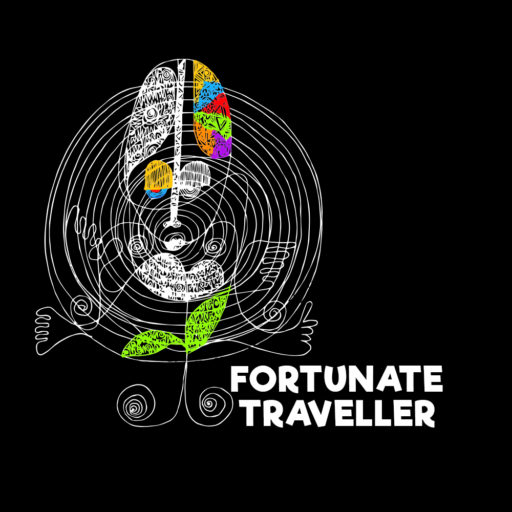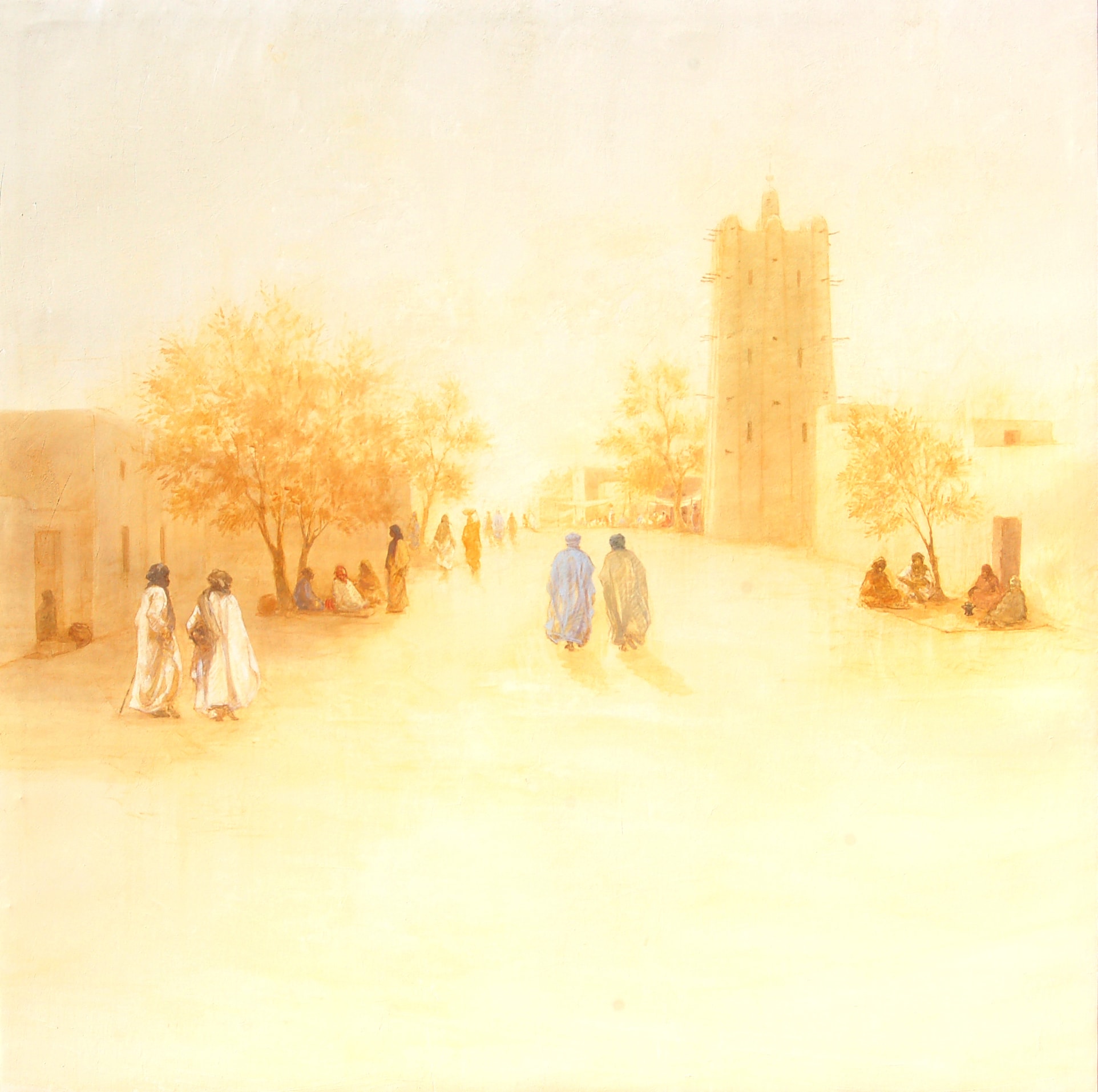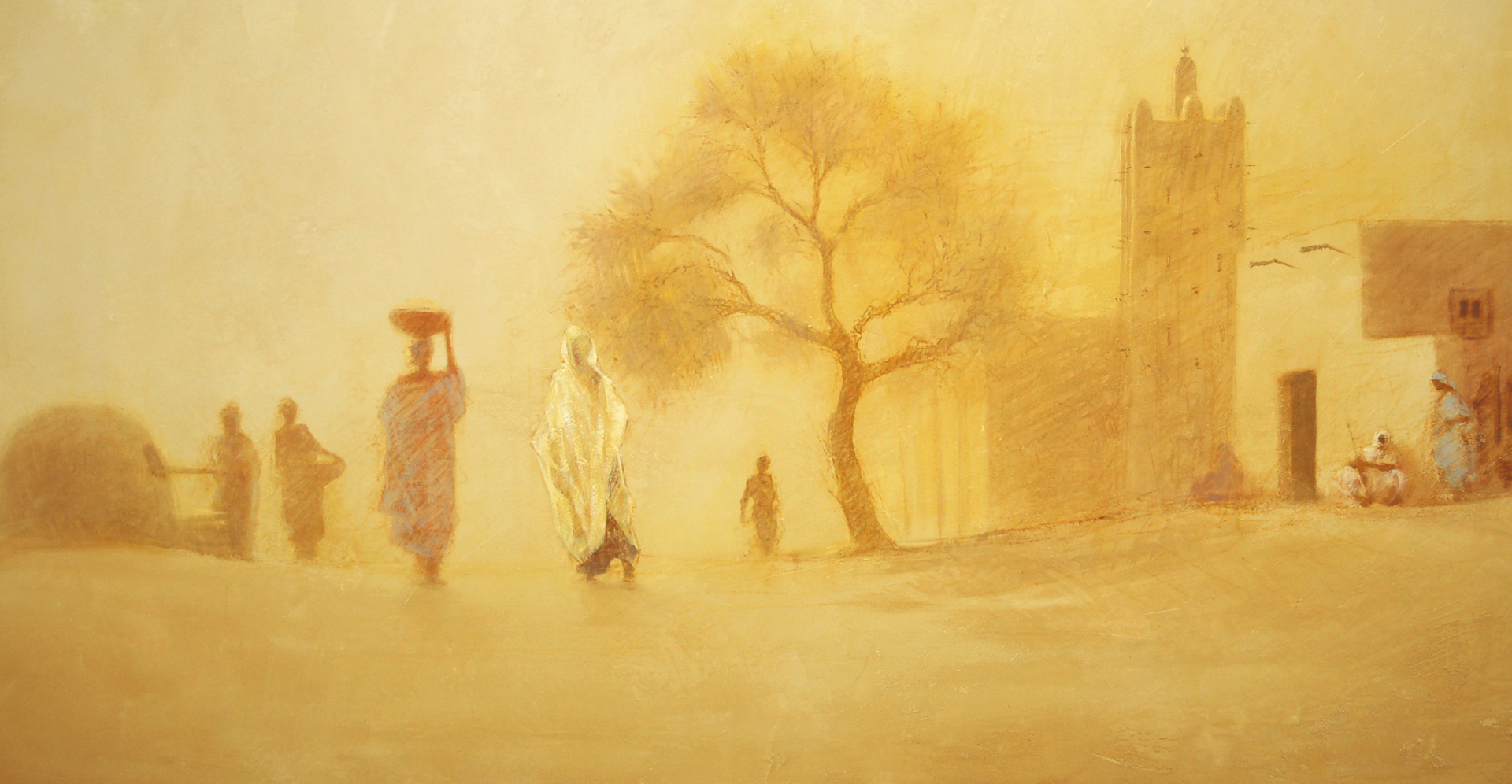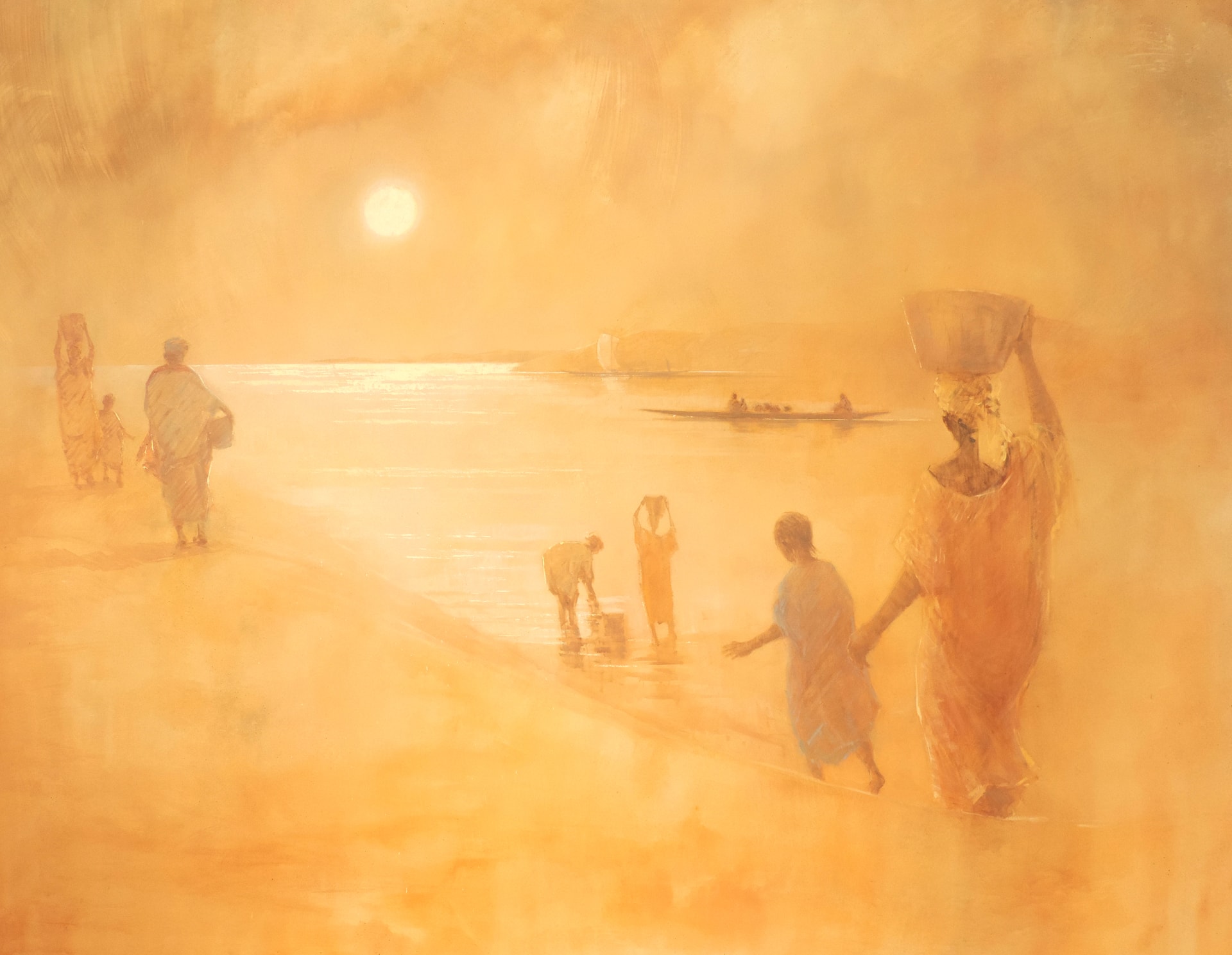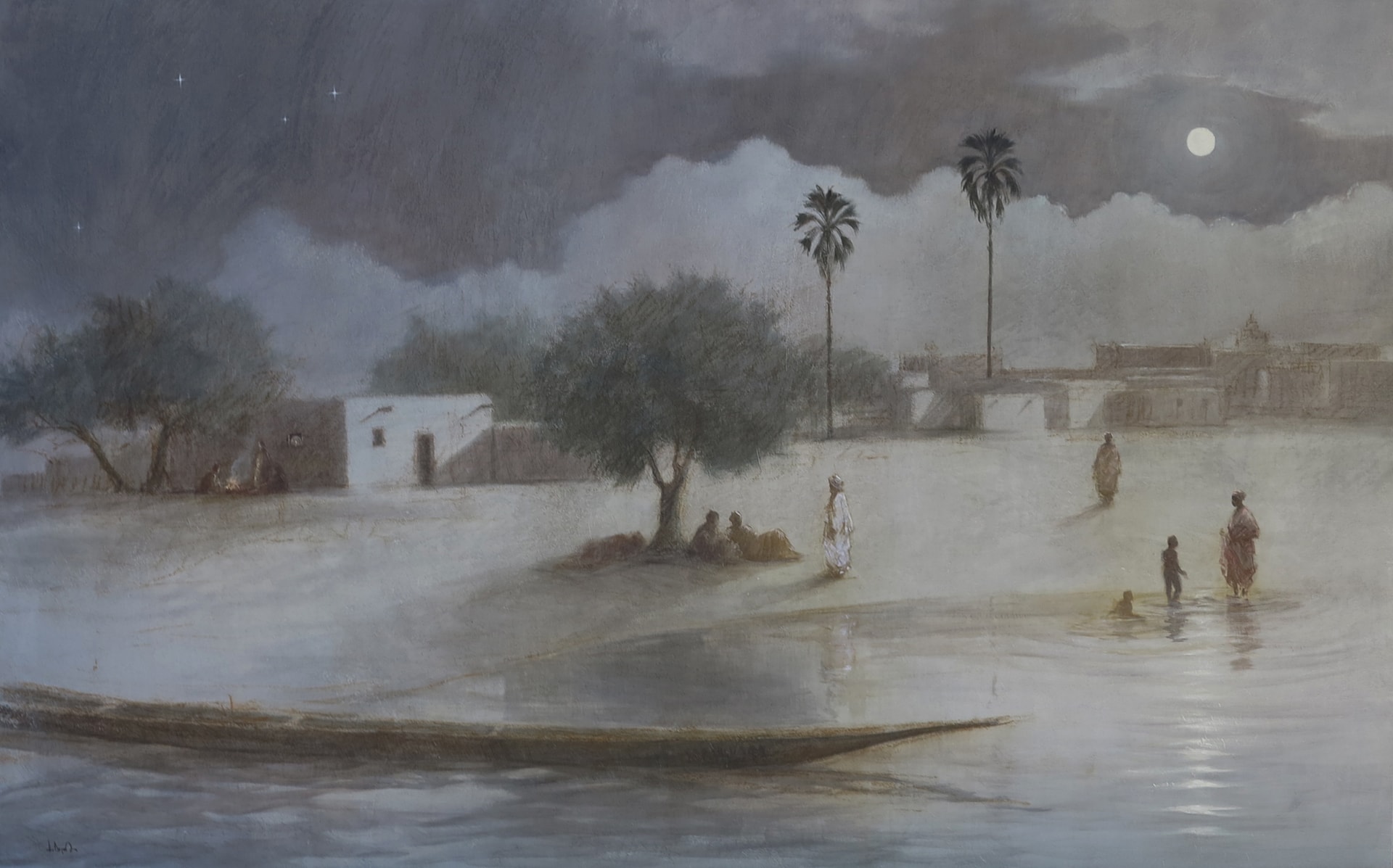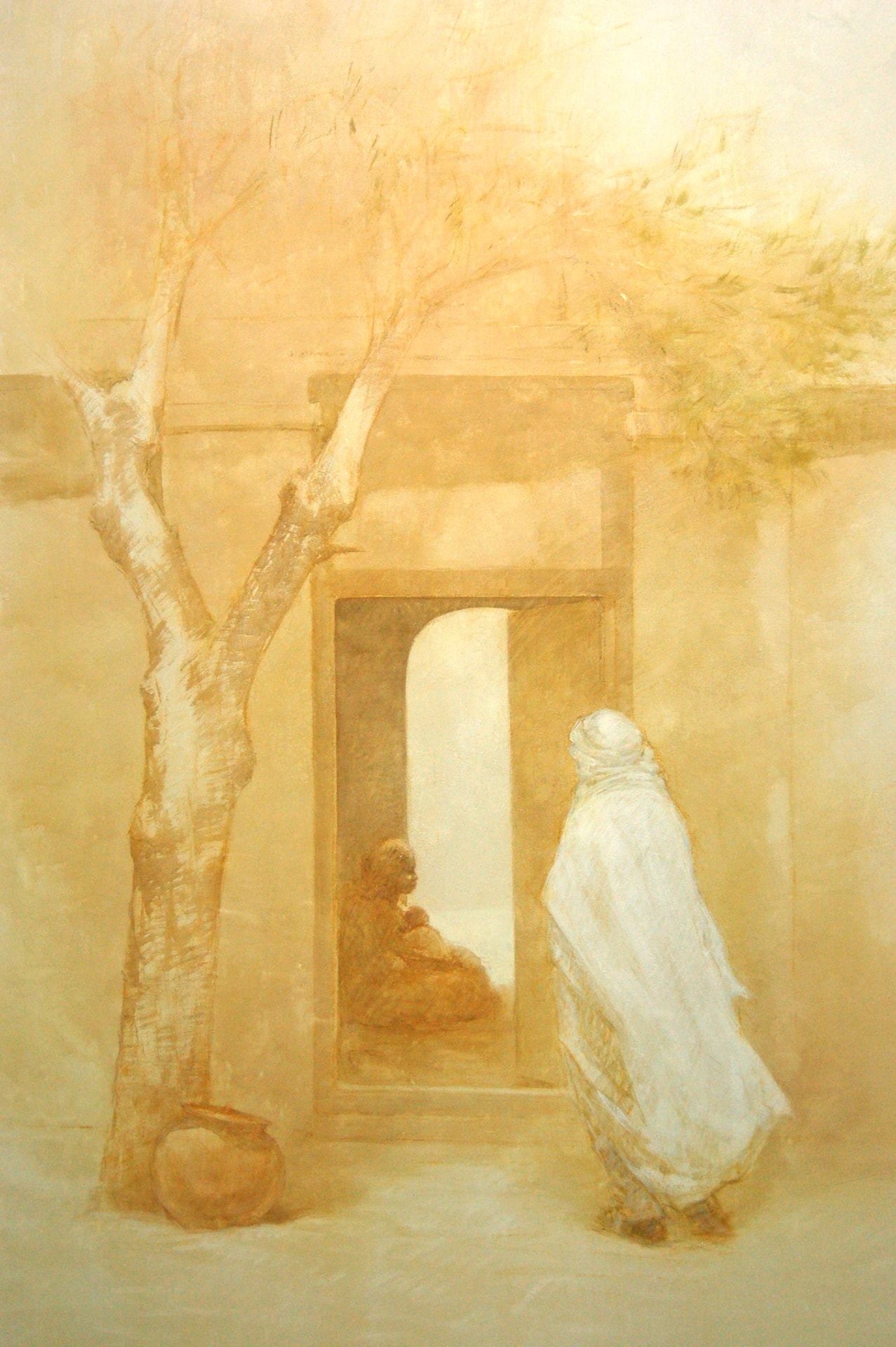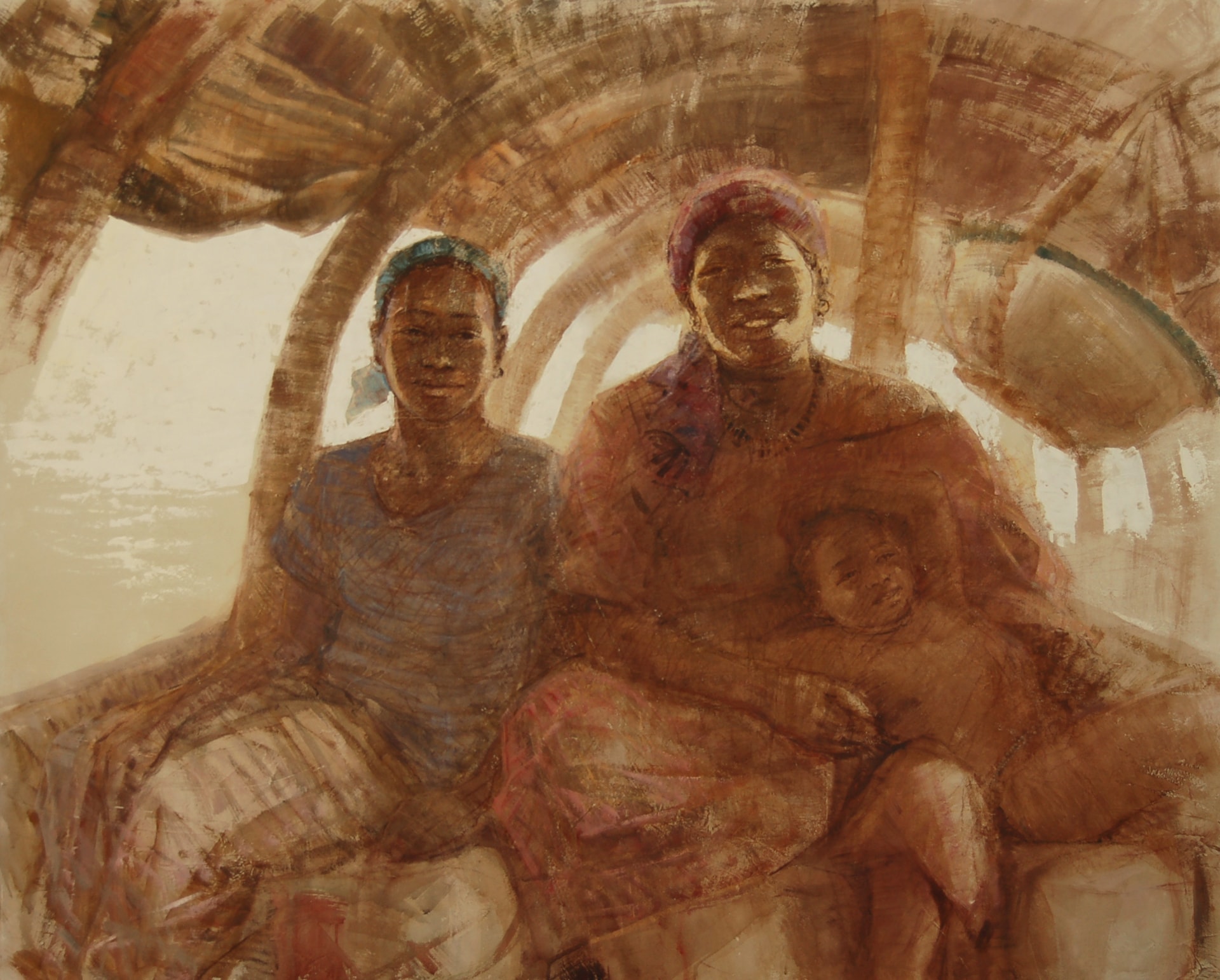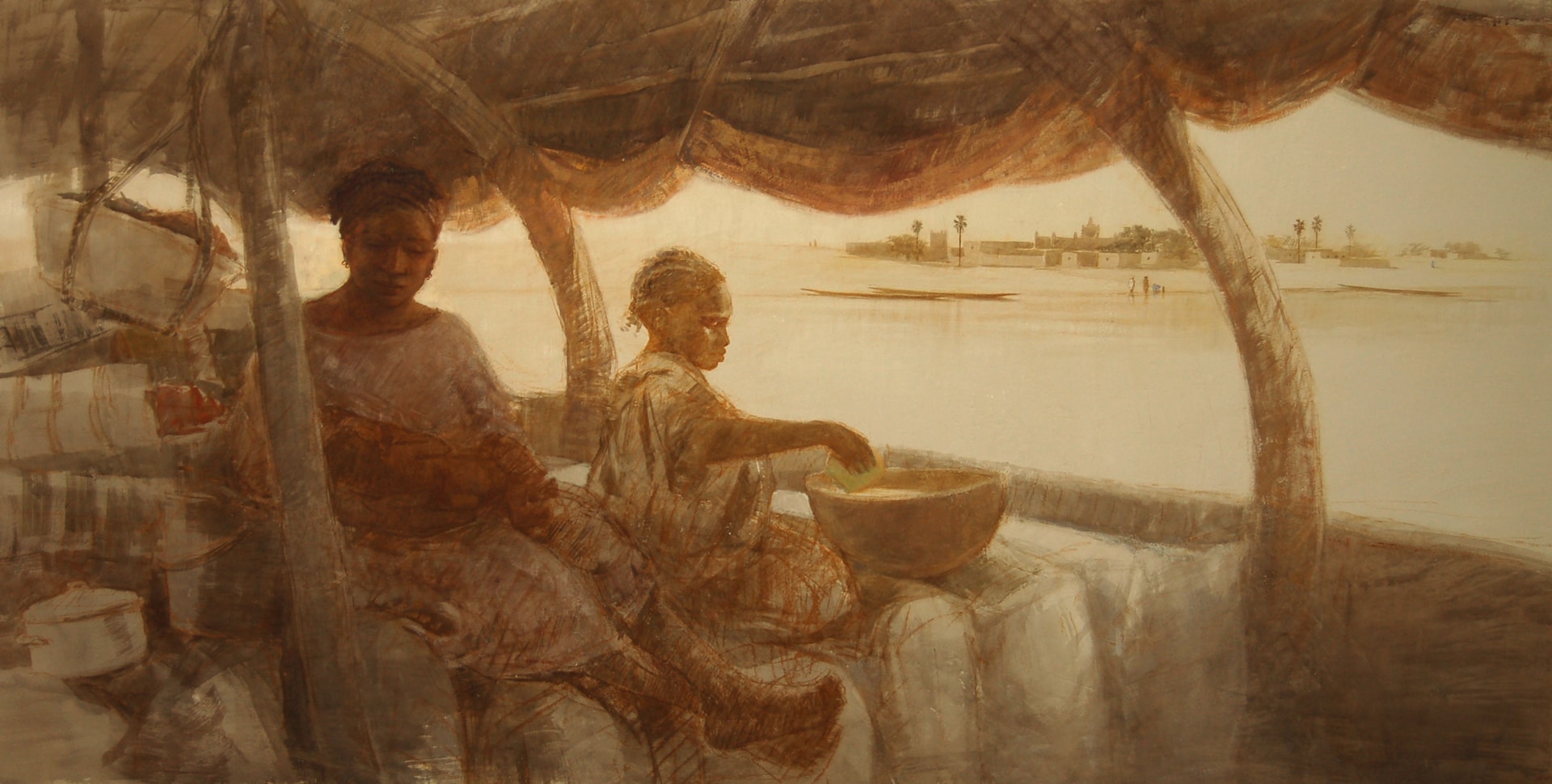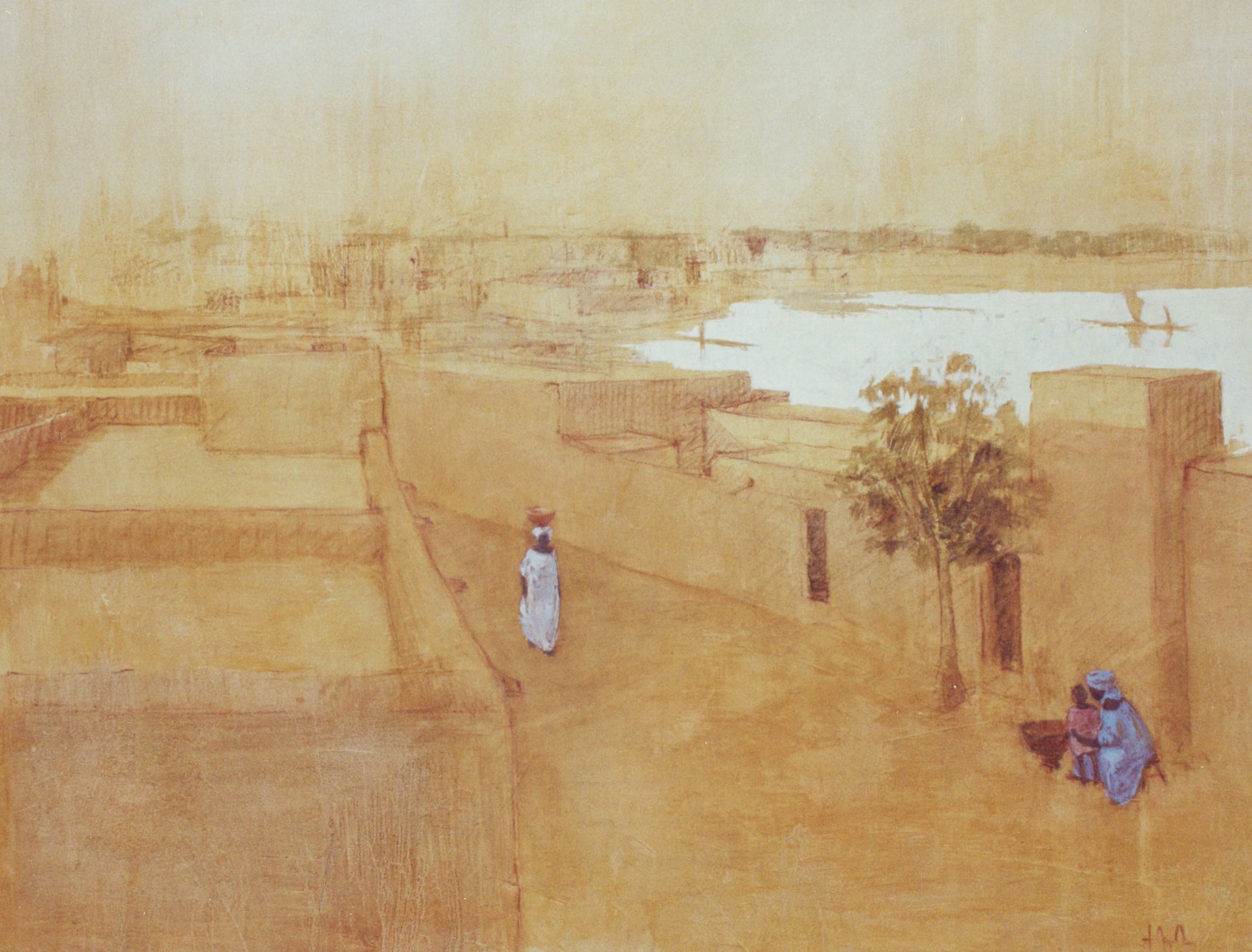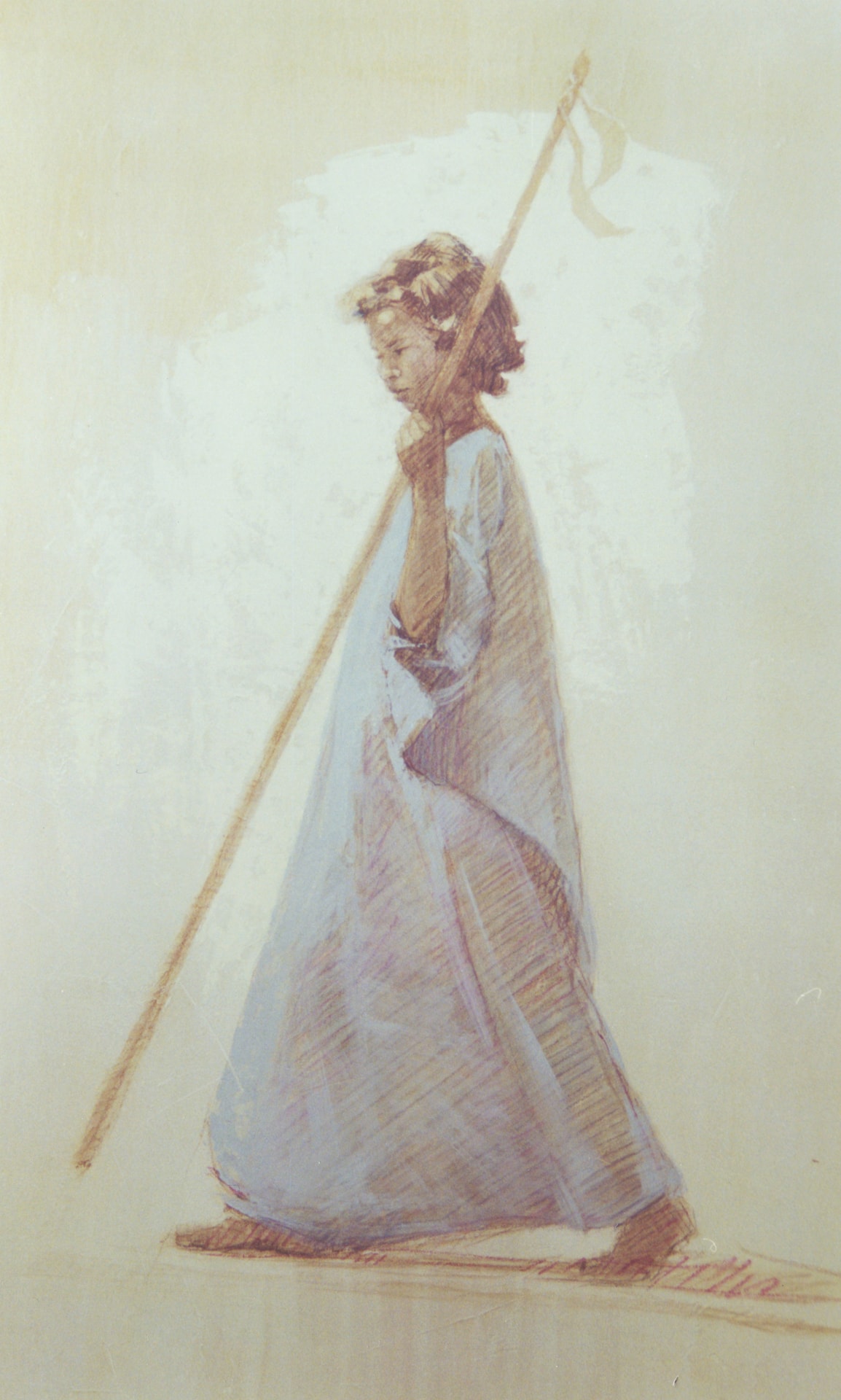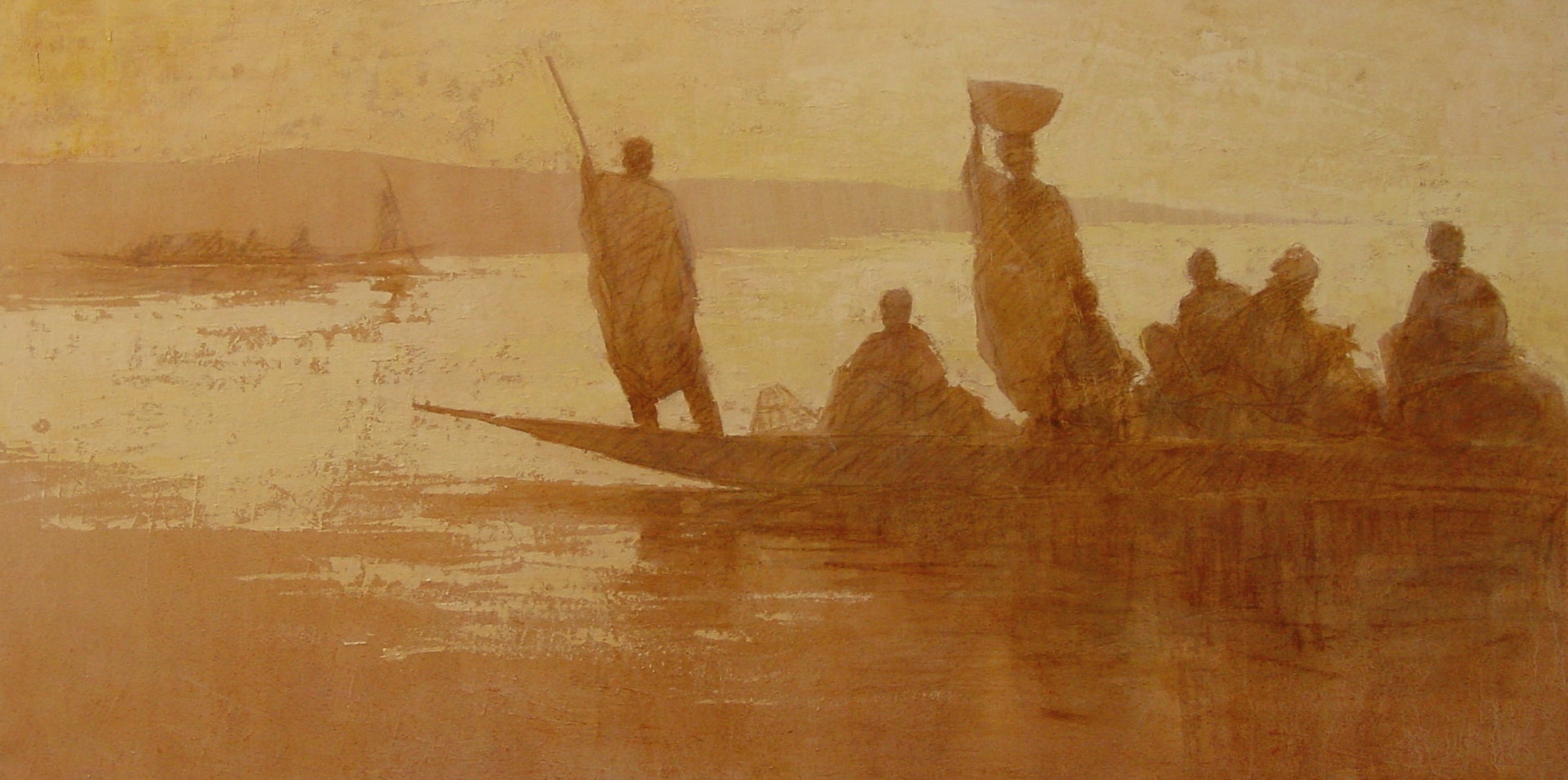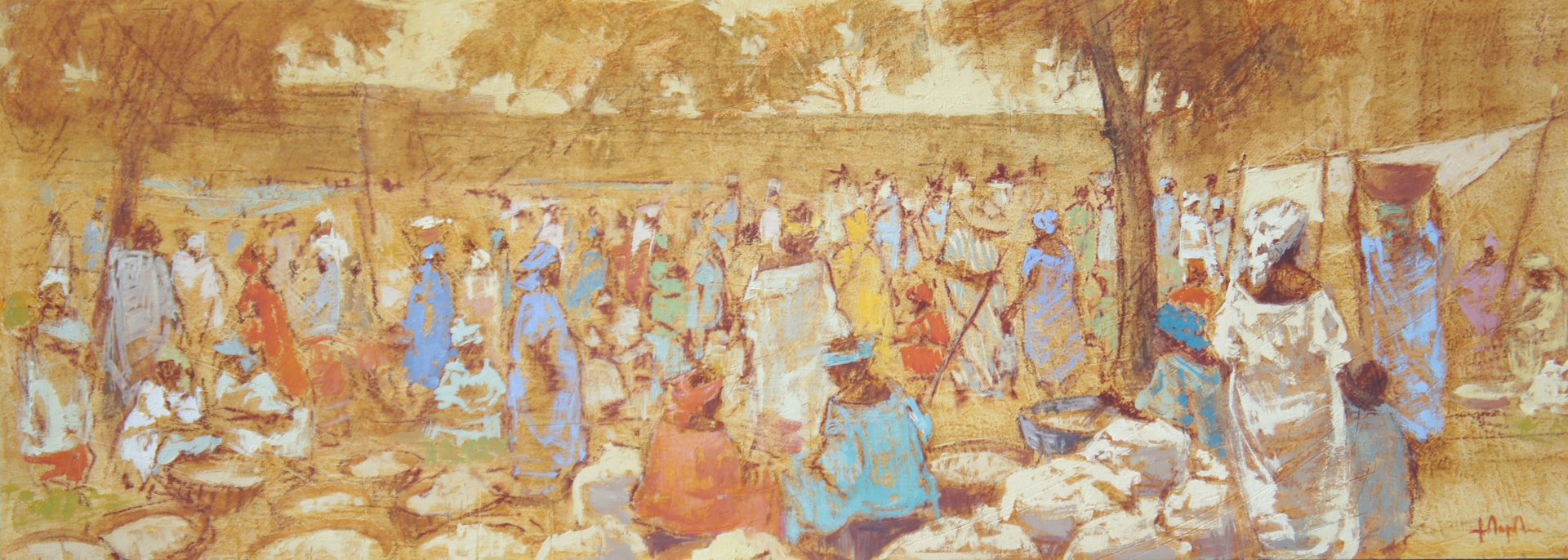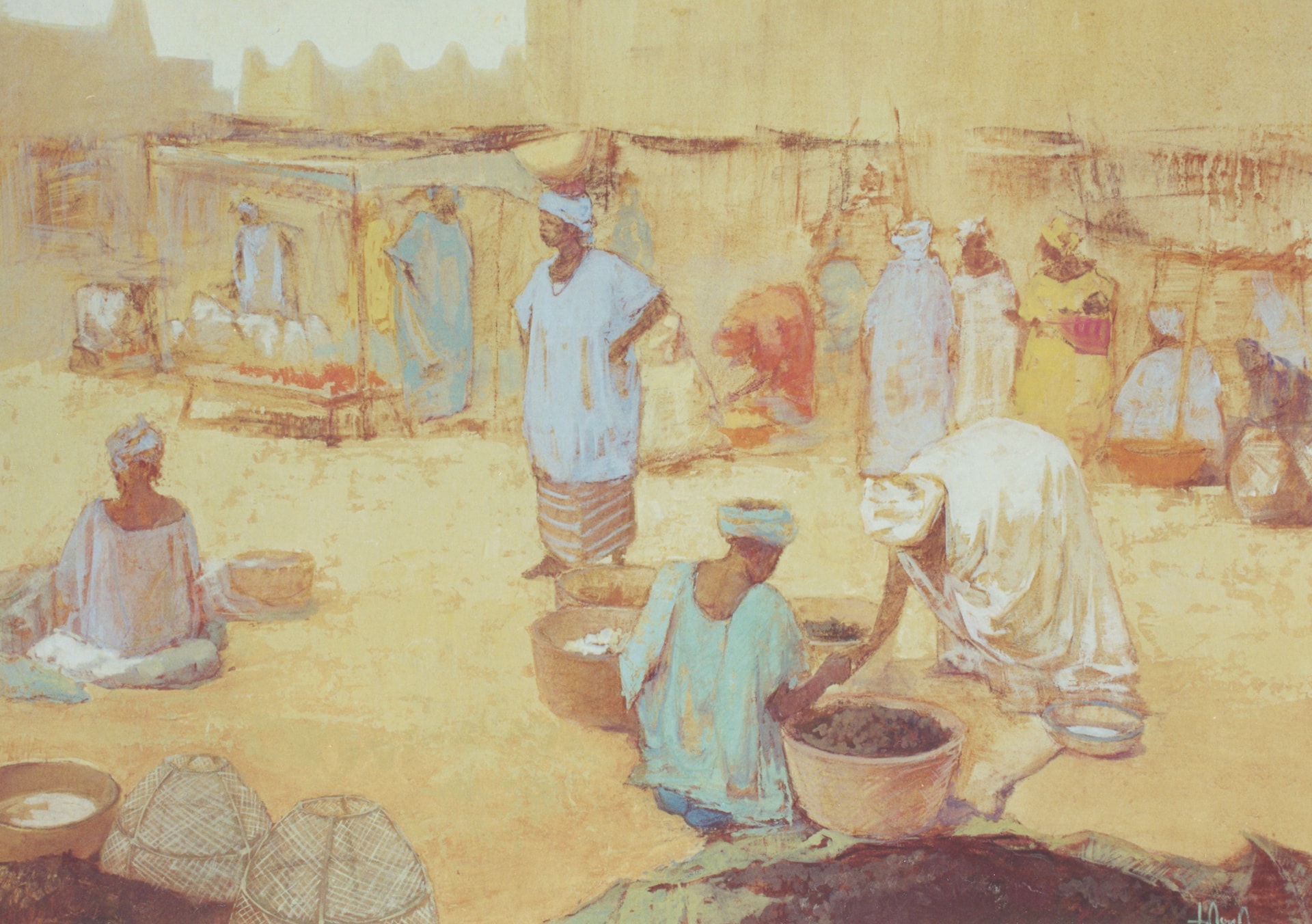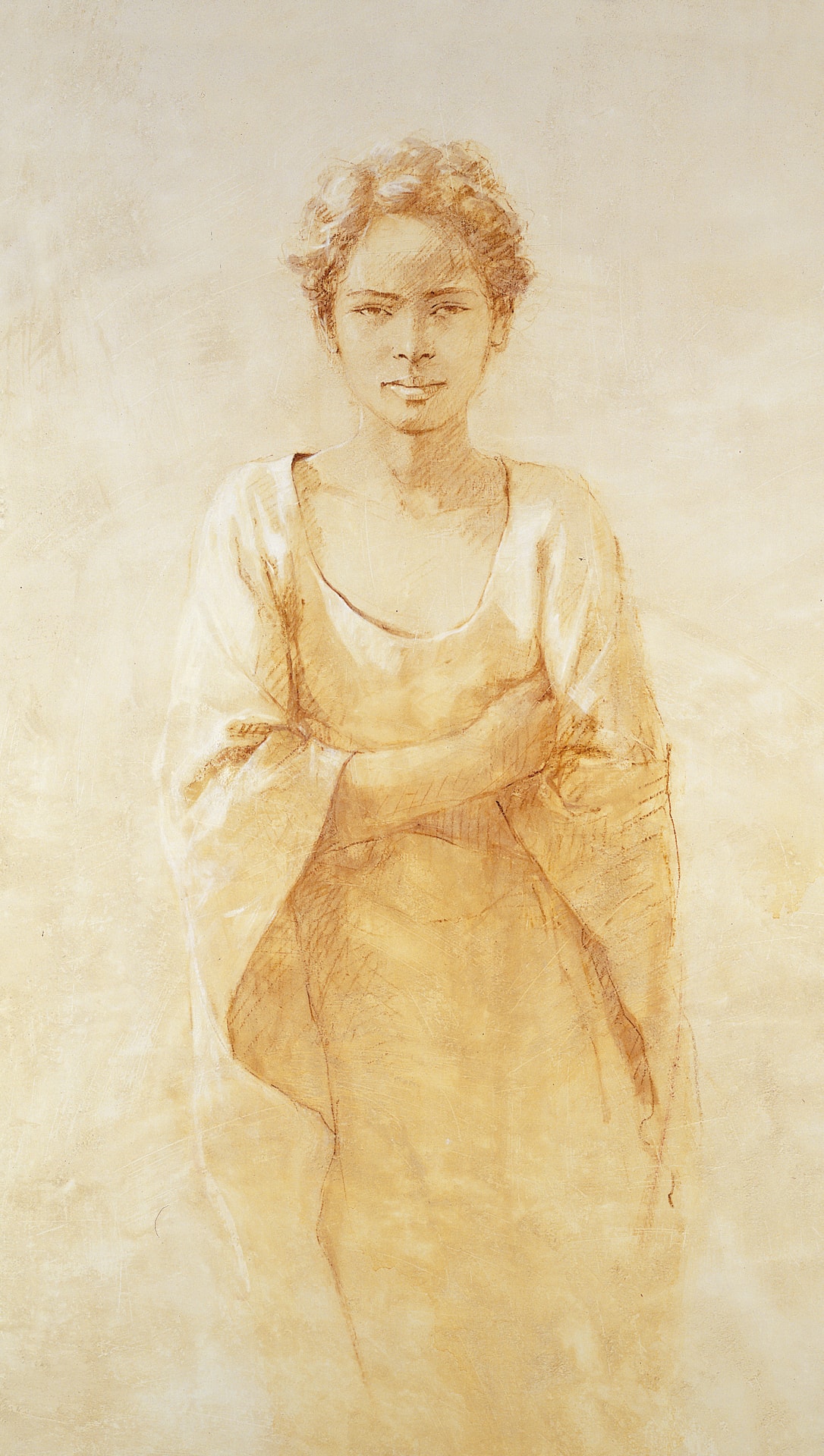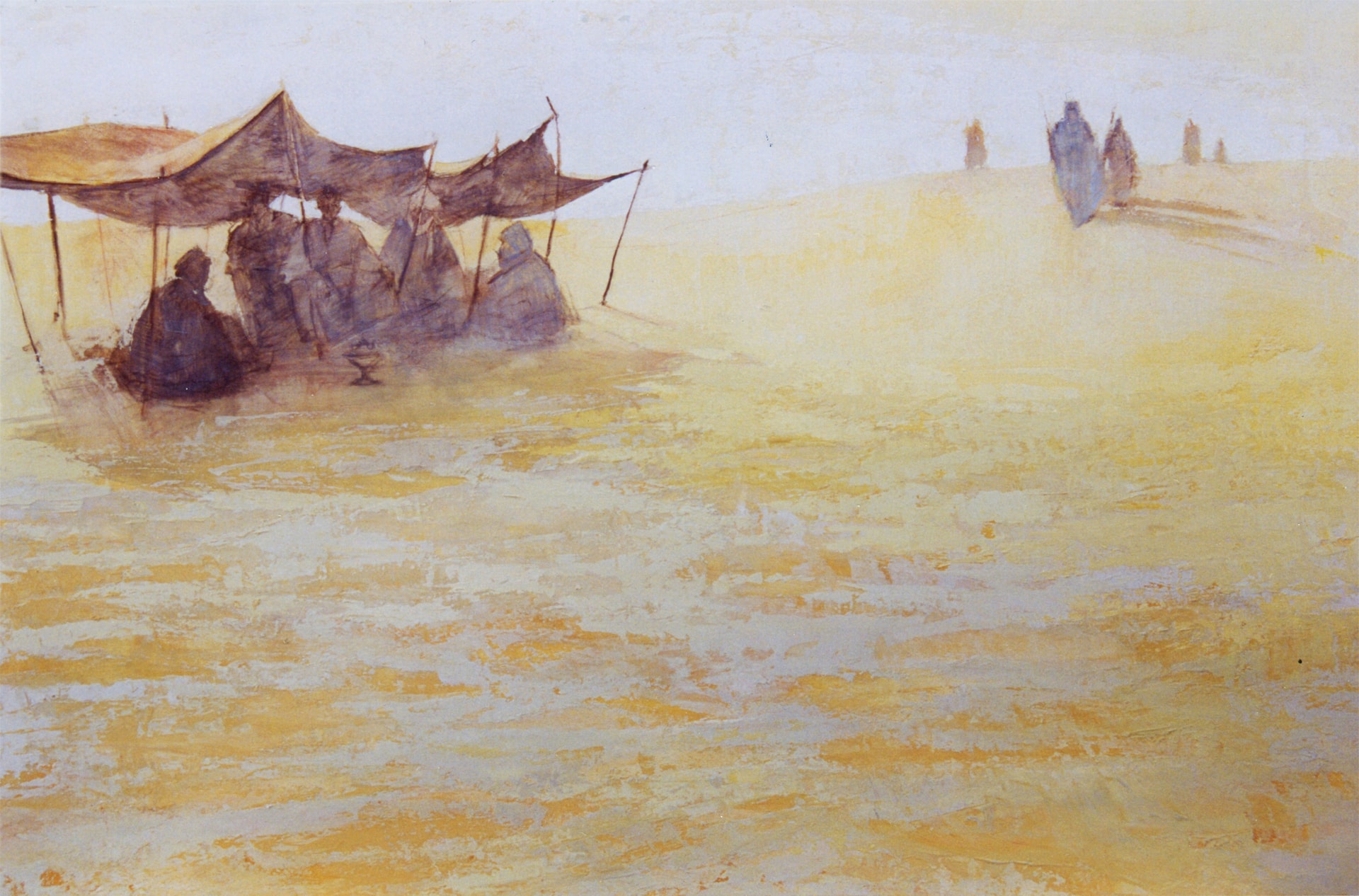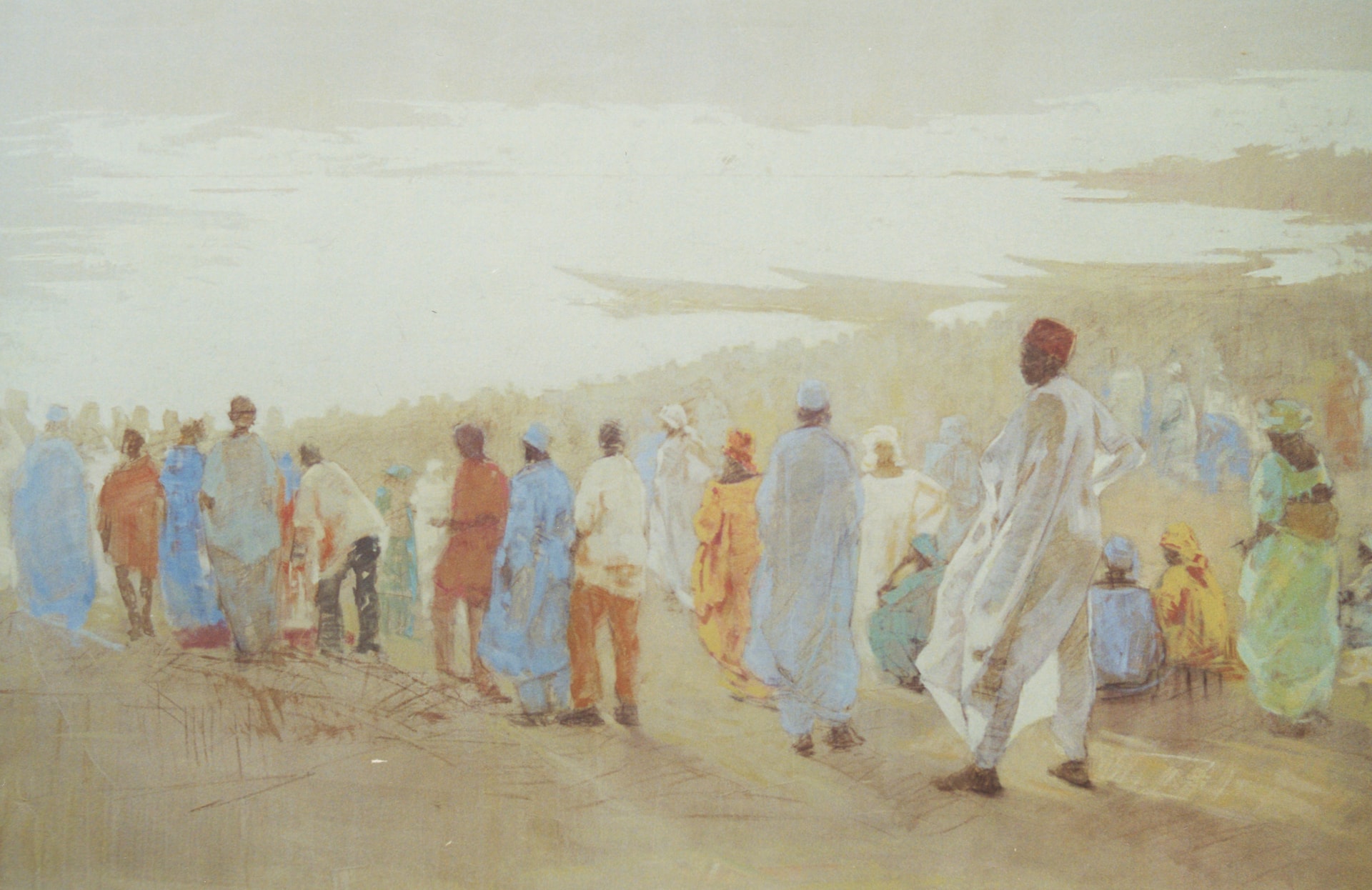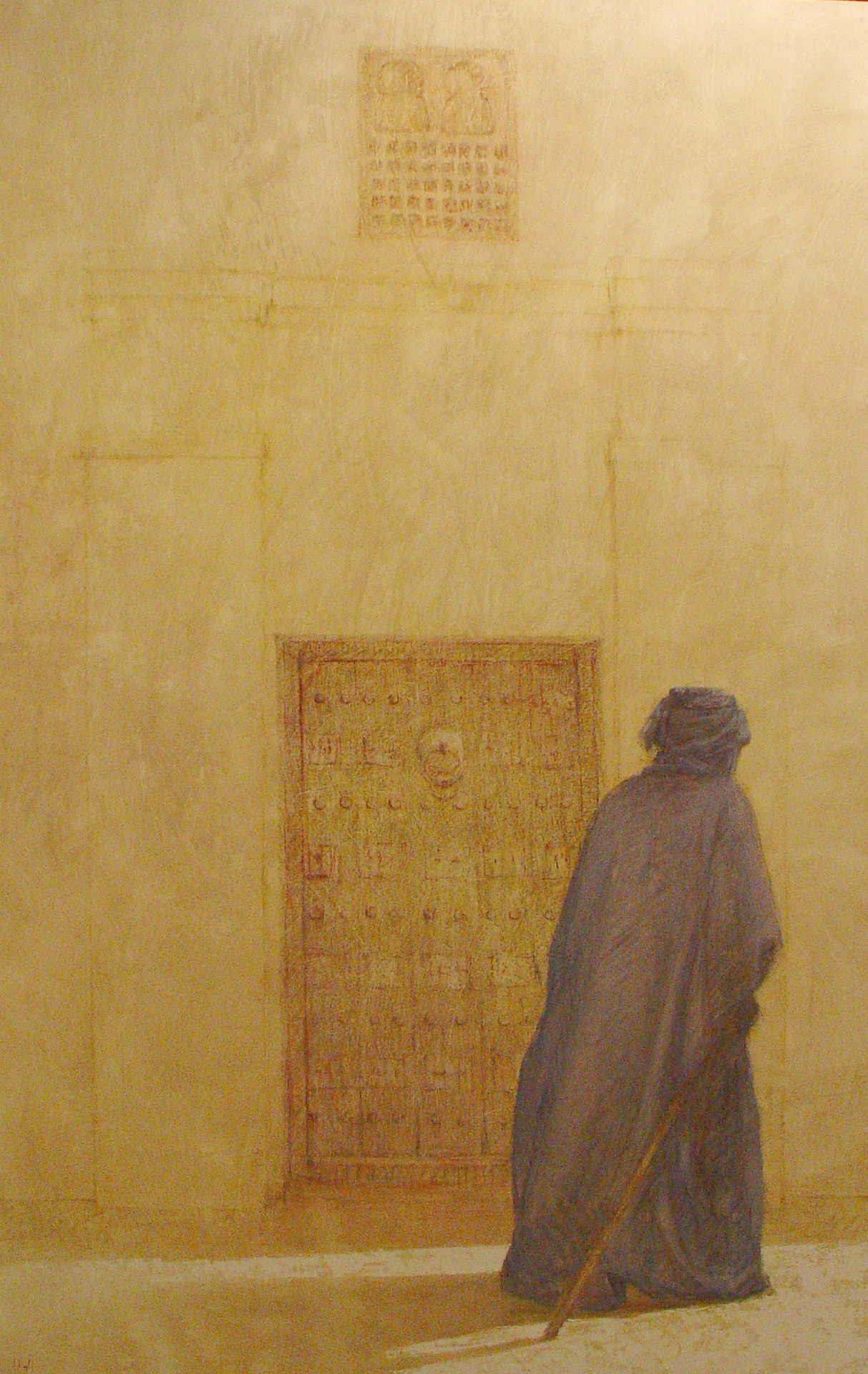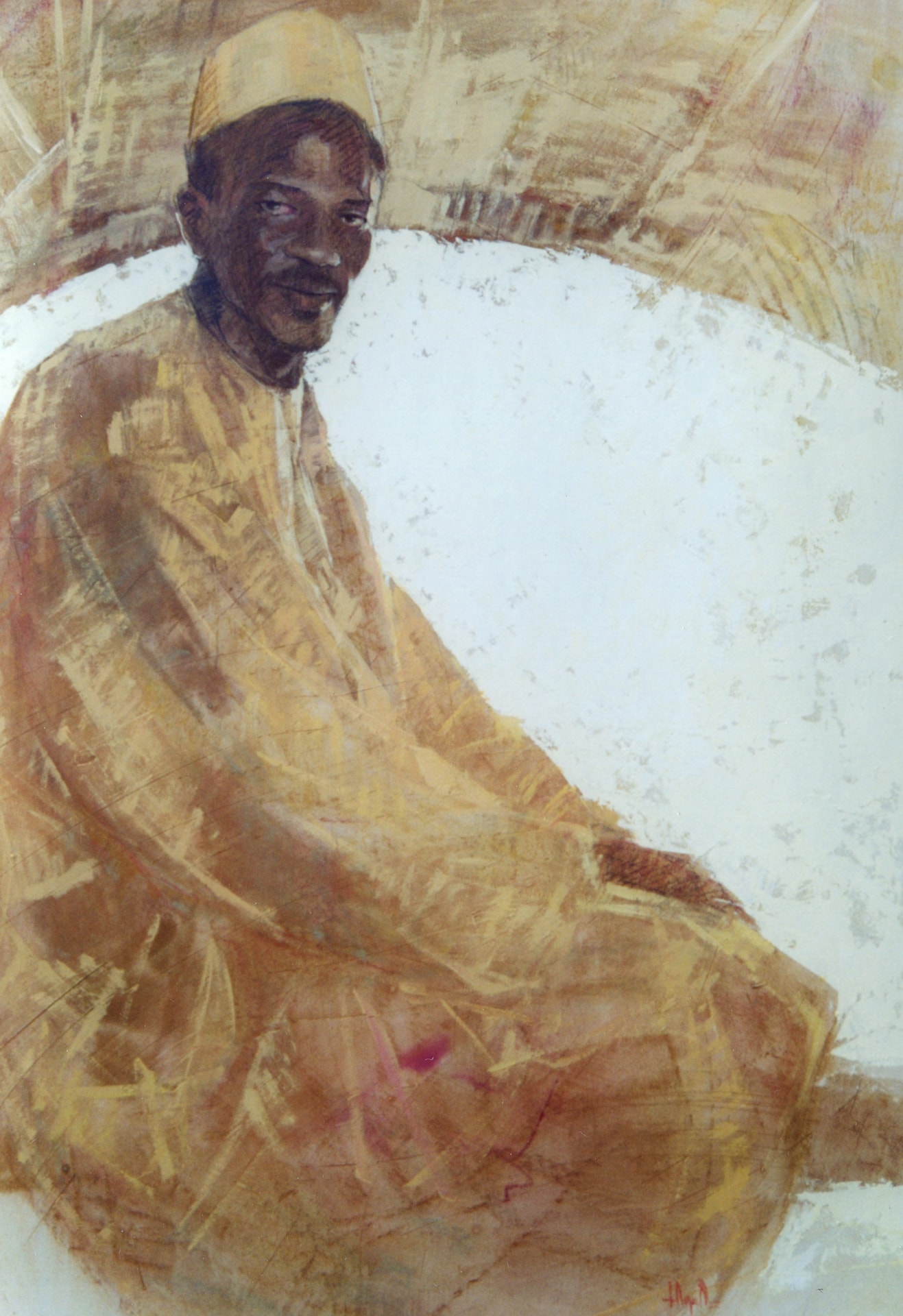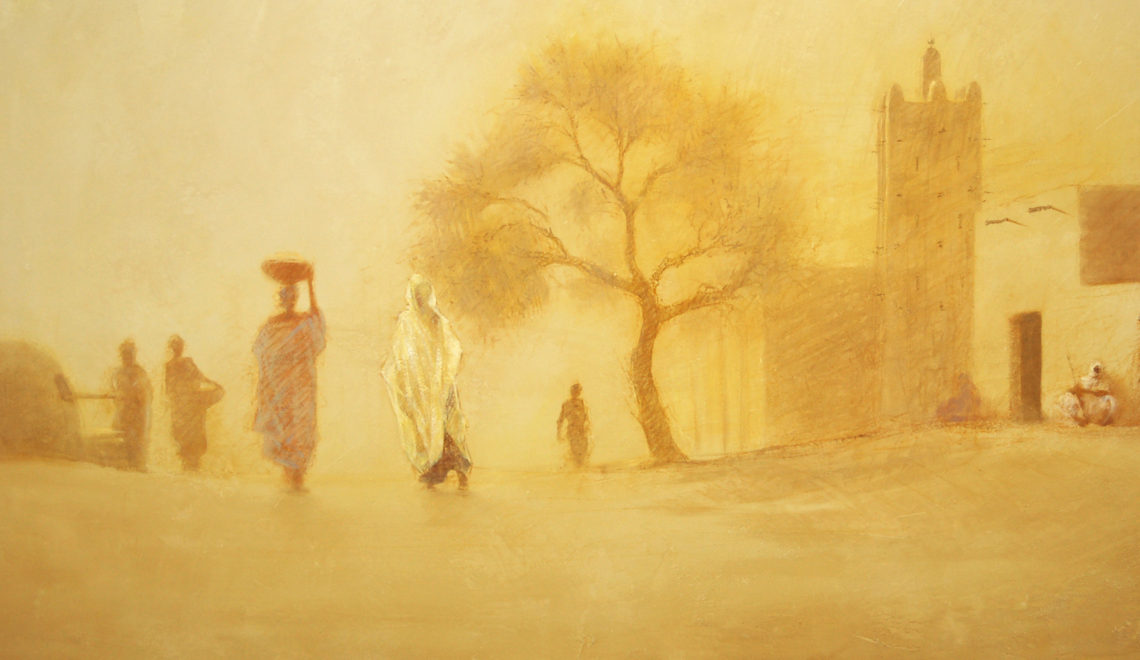
Perhaps we need a little introduction for today’s publication; it is necessary. However, the introduction is not chiefly about the artist we are publishing nor her work. And it is not meant to be misconstrued as an apologism or mere justification. It is meant to broaden our knowledge of the other forms of travel narrative.
In our past publications, you have read travel stories in different genres of literature. But today’s post offers another experience and format travel writing or narrative can appear. While a writer enjoys her travels in retrospection in the pages of a book, a photographer in pixels, a painter enjoys hers in paintings. Painting is an artistic expression that is just as capable of telling itinerant narratives as any other forms of narrative. Which is why we now present you the paintings of Irene Lopez de Castro informed by her travels in Mali.
The artist-traveller’s tales of faces and landscapes intimate us about her encounters and the charm of being elsewhere. Her internal cohesion is artistically internalised in brilliant brush strokes. She becomes not just a painter, but doubles as a storyteller. Her paintings, says Luis Fonseca, Head of Cultural Affairs Embassy of Spain in Korea, ‘masterly capture and project the fury and texture of African light, and the motives chosen (fluvial and urban landscapes, family portraits) exhale an intense love for that continent and its people.’ Thus, she appears as a perceived and sensitive painter that really understands her subject while the art critic, Maurizio Vanni observes further ‘each work of hers becomes the reflex of a pure visual experience, linked to a subsequent poly sensorial experience, where painting frees itself from a passive realism, from an unselfish and too conceptual mimesis.’
The texture of her work is also examined by Pedro Saura Ramos, a photographer of National Geographic and professor at the Faculty of Fine Arts Madrid, ‘Irene takes us to the universe of Mali, strongly, gently, with the nostalgia and magic that surrounds the villages by the Niger River. When I was alone in her studio looking at her work, I thought I felt something of that world, something of the feeling that moves Irene to paint with that strength and love. The portraits are touching, they look, they breathe, they seem to love you. The landscapes and the markets even seem to have sound, in some cases, wind, heat, in other cases bustle.’
So at this point it is pertinent you hear from the artist herself:
‘These [paintings] speak of a place beyond the sands. It is a homage to a country in the Sahel, a land of meeting and tolerance between the various races that populate it and live there together in harmony with the River of Life, the River Niger.
In Mali, despite the difficult existence of its inhabitants, you can feel a way of life that transcends all that is material and reaches us in the form of feelings of Peace and Brotherhood. Silence rules in the desert; the gaze is lost in its immense horizons and lingers upon the large, sparkling river, where the sailboats cut through the waters, where the little adobe villages awake every day as if it were the first day in the story of Man, while along the banks the women collect the river water and wash their clothes. The figures are nothing but an apparition in the Beauty of the setting, where time stands still. I do not know which century we are in. I make a comparison with the haste of the West, our emptiness, and I turn my gaze in the direction of those marvellous women who are the soul of Africa and who walk slowly, always busy, with their small children on their backs. I would like to speak of the humanity of these lands, their hospitality, the beautiful, long greetings, the musicians, the respect for the past, the melancholy and their hope. That land invites you to reflect; it calls us to return to our roots, to our hearth, to simplicity. You feel Eternity in the daily routine.
When I am in my studio, in the city where I find myself living, despite my nomad spirit – maybe to act as a better bridge between cultures – I imagine myself flying over the Sahara and landing near the river that inspires me. Then, at times, the images take shape on the canvas and mould themselves into clouds of light and sand on a dune, on the banks of the river, in a market, in a tired, but serene face. It is precisely in that moment, with the vibrations of the invisible, that I feel the presence of a source of Beauty that inspires us. For me, painting means walking along a sacred path in search of spirituality. In some way, pictures constitute the door to a temple of light, inspired by a purer place, far from our civilization.
Mali still reflects the origin of the world and the already forgotten passages of the Book of Time and, that reality coincides with the perception that I feel of the power of Art, as a means of union between cultures and breaking down borders; it is an idyllic vision where Humanity is called to overcome the times of discord and to learn to live in Peace and Harmony, flooded by the light of the great River of Life.’
Enough said already. Enjoy the slides!
- Dawn in Timbuktu 200 x 200 cm mixed media on canvas
- Golden Mali 65 x 130 cm
- Bonjour-Mali-150-x-192-cms-tec-mixta-sobre-tela1
- Blue-river-89-x-146-cms-tec-mixta-sobre-tela1
- TIMBUKTU-195-x-130-cms-tec-mixta-sobre-tela
- Omar Maiga´s family 103 x 130 cm mixed media on canvas
- In the pinasse 97 x 195 cm mixed media on canvas
- Azoteas-97-x-130-cms-t-mixta-tela
- Bimba-tuareg-92×65-cms.-t-mixta-tela
- De-Bourem-a-Gao-65-x-130-cms-t-mixta-tela
- Dia-de-mercado-22-x-60-cms-t-mixta-tabla
- Dia-de-Mercado-65-x-95-cms-t-mixta-tabla
- Fatima-81-x-54-tec-mixta-tela
- La-jaima-116-x-81-cms
- Los-pescadores-130×87-cms.-t-mixta-tela
- Maison-de-la-memoire-200-x-130-cms.-t-mixta-tela
- Omar-100-x-81-cms-t-mixta-tela
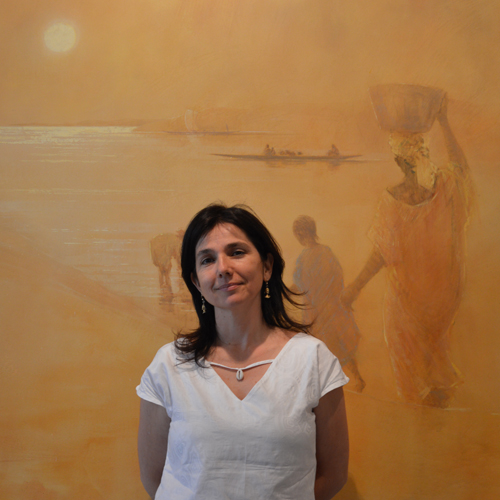 Irene Lopez de Castro is a painter, photographer and traveller. She is a native of Madrid, Spain, and holds a Bachelor’s Degree in Fine Arts from the Complutense University of Madrid. Irene´s paintings are the result of more than 20 years of travel in Africa and India.Wherever she goes, Irene looks for Light and Beauty and she has found them in the simple life of the people living by the sacred rivers Ganges and Niger, and in the desert landscapes of the places she has visited, especially in Mali. Her work is like a bridge between different cultures, so that souls can be connected trough Art.
Irene Lopez de Castro is a painter, photographer and traveller. She is a native of Madrid, Spain, and holds a Bachelor’s Degree in Fine Arts from the Complutense University of Madrid. Irene´s paintings are the result of more than 20 years of travel in Africa and India.Wherever she goes, Irene looks for Light and Beauty and she has found them in the simple life of the people living by the sacred rivers Ganges and Niger, and in the desert landscapes of the places she has visited, especially in Mali. Her work is like a bridge between different cultures, so that souls can be connected trough Art.
Since 1996 Irene has participated in many group and solo exhibitions, prizes & art fairs in cities such as Venice, Verona, Milan, Florence, Paris, London, Madrid, Rome, Padova, Biarritz, Arhem, Seoul, Jeju and Santiago de Compostela. Some of her catalogue publications include Timbuctú (2005), Sahel (2009), Namasté (2012), Del Níger al Ganges (2015).
